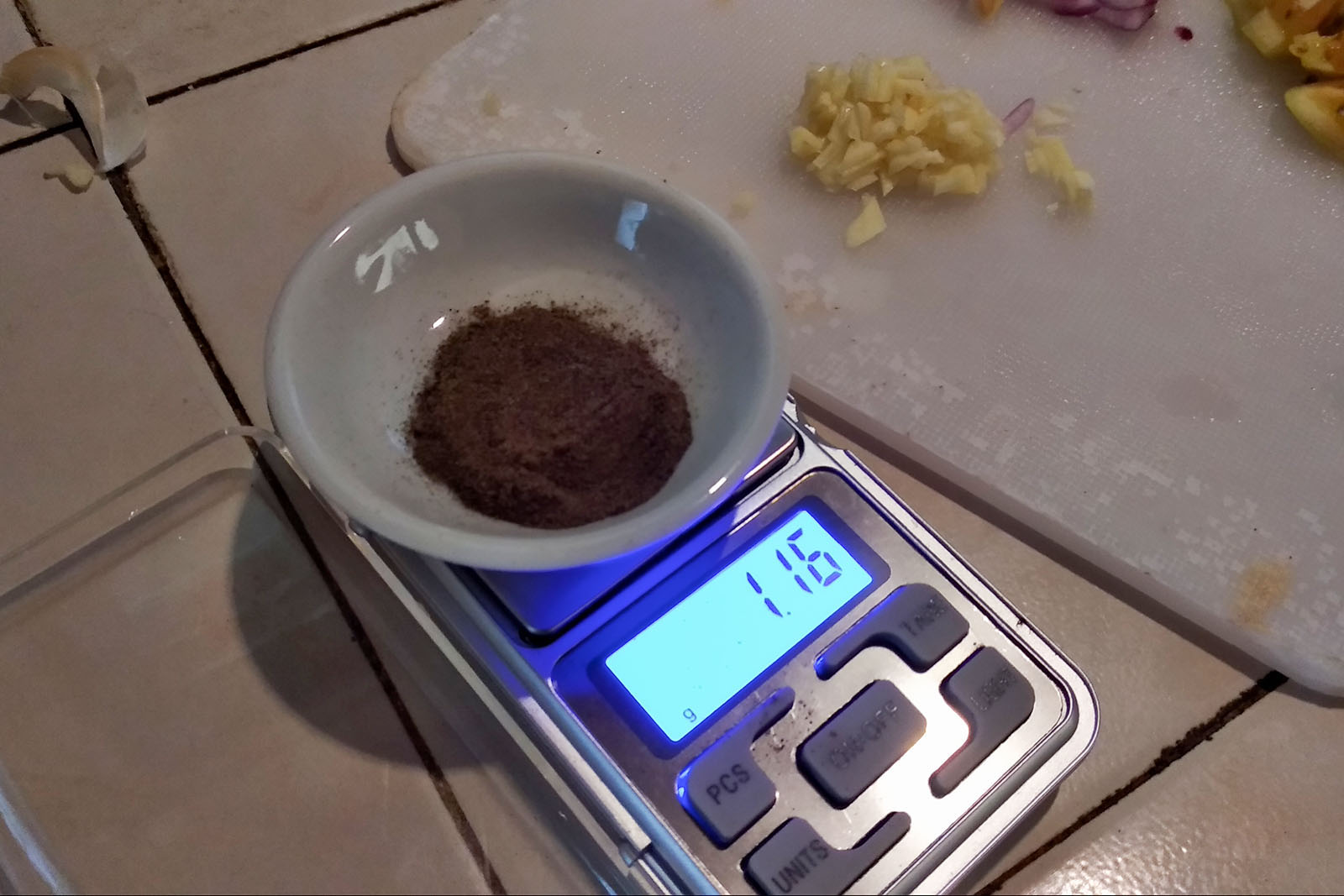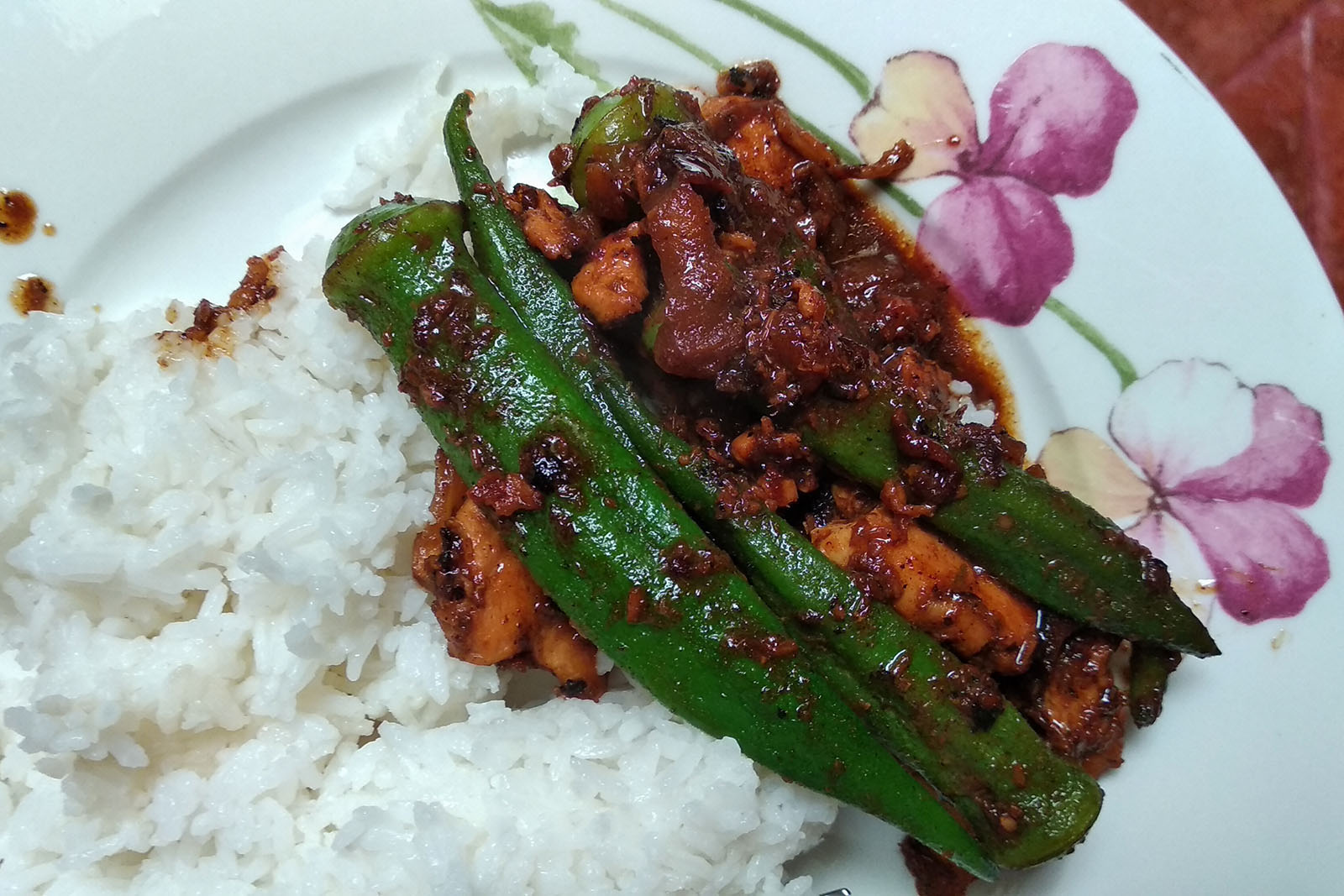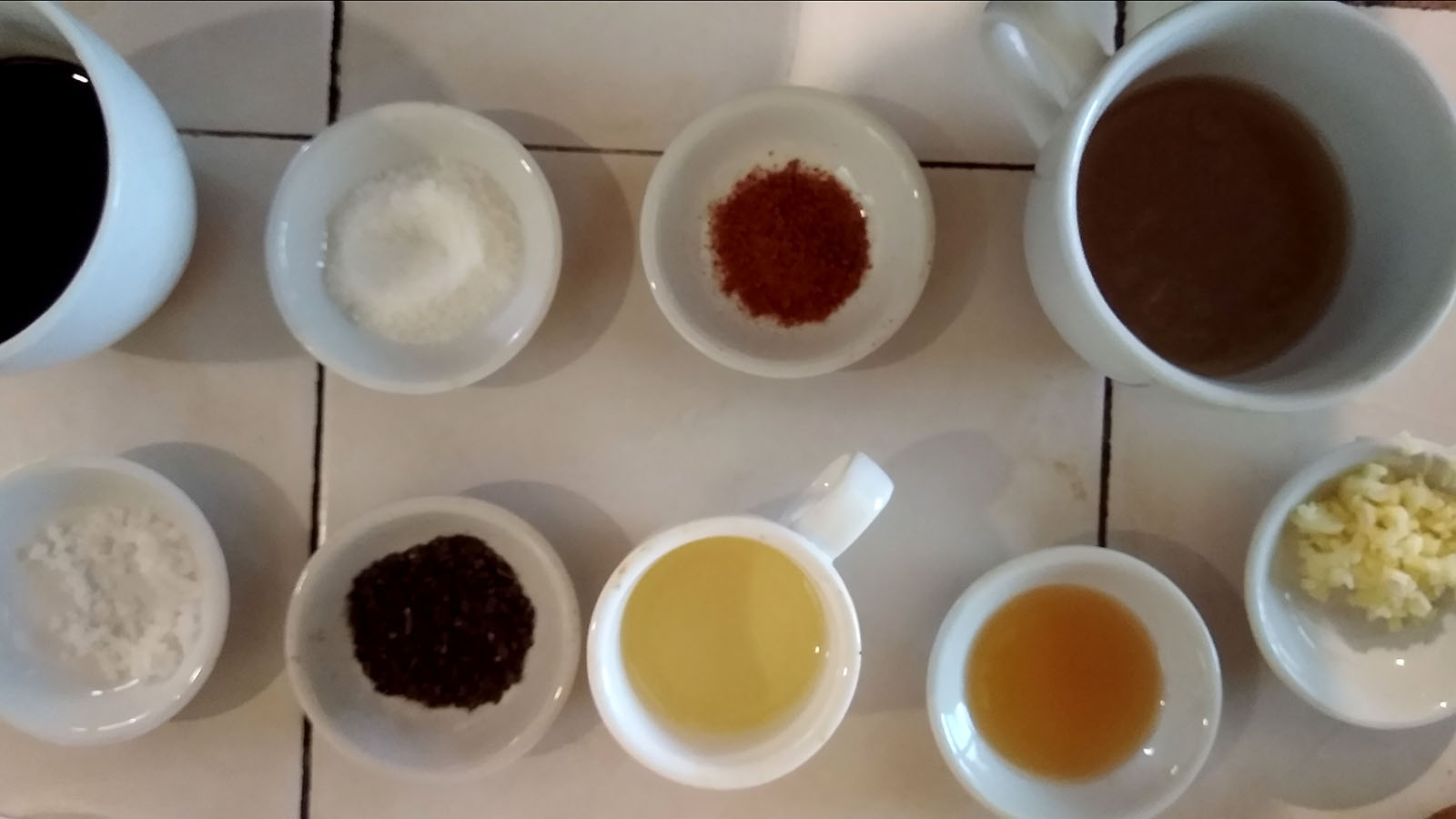ILIGAN CITY (MindaNews / 17 April) – I have to confess that, despite my numerous hashtag-lutongbahay posts of yummy food on Instagram, I didn’t know how to cook; hadn’t actually cooked, save those reheating of canned goods during Boy Scout camps 40 or so years ago.
Until a few days ago, that is.
I may have helped chop some ingredients for tabirak (what others call binignit or ginatan), or stirred the pot full of langka and crabs in coconut milk. But I was there only as labor, doing my tiny bit to ease someone’s tired hands and arms.
It’s only these past few days that I’ve been left all alone in the kitchen to come up with something from scratch so my family won’t go hungry. Imagine the chaos in our little kitchen.
My late Ilocana mother was so good in the kitchen that we, especially the three boys at the tail-end of a brood of eight, didn’t have to help out in the cooking.
Since having a family of my own, we were lucky with our kasambahays through the years because they all knew how to cook well. And thus, again, I was spared cooking duties.
 Frying kutob with a face shield. MindaNews photo by BOBBY TIMONERA
Frying kutob with a face shield. MindaNews photo by BOBBY TIMONERA
My wife Miriam enjoyed cooking lessons in her high school Home Economics class, aside from the Bicolana dishes she learned from her mother. But she’s too busy with work all our married life, often coming home past midnight that she couldn’t have the time nor energy to cook.
My children, meanwhile, were forced to learn how to cook when living far away from home for studies or work.
In this pandemic, as we all work from home, we’re lucky that our kasambahay, Rodgen, is a self-styled chef. We’d tell her what we want to eat, she’d prepare a to-buy list, and we get a rider to do the marketing. Then she’d research on her own online, often on YouTube, how to cook the food we love. Everybody happy.
Then late evening last Sunday, Rodgen got the news that her mother died. She had never gone out of our home since the lockdowns began in March last year. But despite our fears of COVID-19 exposure in super-spreader events like a funeral, we had to let her go. She left within a few hours after hearing the news, in the wee hours of the morning.
We divided the household chores among ourselves. I got assigned to cooking lunch.
Day 1 – Okra bagoong
My assignment started on Tuesday. We opened the ref, checked out the supplies, then googled a recipe based on what we have. My wife chose the recipe for the day, emailed it to me, then I was on my own.
As I stepped into the kitchen, laptop in hand so I can closely follow the instructions, I said to myself: “This is it, finally!” I felt overwhelmed, the same feeling I had decades ago when, being a young promdi journalist covering my hometown and the rest of the Lanao provinces, I was suddenly thrown into the concrete jungle, walking and commuting around Metro Manila amidst the crowd, the traffic and the tall buildings for my very first beat assignment in the big city.
Scared, yep, but at the same time excited. The task looks so daunting I really couldn’t imagine I could pull off serving lunch to my family in an hour or two.
The recipe for “okra with bagoong” from the Asian in America blog says prep time 10 mins, cook time 20 mins, for a total of 30 mins. It’s 11:15 a.m., so we should be ready for lunch at noon. Or so I thought.
Okra, vegetable oil, garlic, onion, tomato, bagoong, ground black pepper – all check! One major missing ingredient though: pork belly. “Substitute it with chicken,” Miriam said.
Mince two cloves of garlic, chop one whole medium-sized onion, slice one whole medium-sized tomato, that I can understand. But how am I supposed to prepare 1/2 teaspoon of ground black pepper?
 One-half teaspoon of ground black pepper is equivalent to 1.165 grams. MindaNews photo by BOBBY TIMONERA
One-half teaspoon of ground black pepper is equivalent to 1.165 grams. MindaNews photo by BOBBY TIMONERA
So to Google I typed, “One teaspoon of ground black pepper is how many grams?” Voila! Divide 2.33 gm by two, and I have 1.165. The coffee geek that I am, I have three digital scales at home for my coffee. One of those scales, a gift from another coffee nerd, can measure accurately up to two decimal places. So I just rounded it off to 1.16 grams of ground black pepper. Cool!
Step number one: “Wash okra. Dry with paper towels. Carefully, trim stems with a knife. Leave the caps on. Do not puncture the pods.”
What?! What did she just say? What am I supposed to do with the okra? So I shouted: “Ma! Ano daw ’to? Paano ’to?” Hearing my call of distress, she left her work and came to me: “When harvesting the okra, you cut the stem from the plant, right? Whatever is left of it, cut it out.”
Just like that?!
“Yep!”
The instruction sounds too sophisticated to me. The steps outlined for Mac repair in ifixit.com look easier.
So I sauteed the garlic, onions, and tomatoes. New word: saute. Smells so yummy!
I might have overcooked the okra, boiling it for eight minutes instead of five, then dumping it into ice water. The okra turned out very nicely – soft and green.
 Okra bagoong, my very first attempt at cooking. MindaNews photo by BOBBY TIMONERA
Okra bagoong, my very first attempt at cooking. MindaNews photo by BOBBY TIMONERA
Overall, it was a success. We all enjoyed our delicious lunch. But maybe there was some cheating involved: I used the best ginisang bagoong in the world! Sold by the local restaurant Delecta of the Koppin family, this is the best bagoong we’ve ever tasted. We’ve tried many versions from all over the country, nothing comes close. My daughter once brought a few bottles to Europe, it blew her classmates’ minds away.
The blog said thirty-minute prep and cook time. I started at 11:15 a.m., we had lunch at 1 p.m.
Day 2: Filipino Chicken Macaroni Sopas, courtesy of Panlasang Pinoy
Skin one pound of chicken, it says. But, there’s no more chicken in the freezer, just the skin. Use what’s left of the skin, and add ham instead, I was told. Ham was supposed to be just an add-on, but it became the main ingredient now. I used what’s left of the ham instead of the original 2 ounces, and correspondingly added too much cabbage to compensate. I substituted celery with onion leaves and skipped the milk because we didn’t have any.
Result: eatable, we were all happy with it, but it appears there’s almost no more soup in it. And there was enough leftover so we had it for dinner, too. Barry our pitbull didn’t like it as he ate so little.
Day 3: Korean-Style Seared Tuna
This sounds too complicated for me but at the same time, I was excited to try this.
Aside from the tuna, there were a lot of ingredients in the list: soy sauce, sugar, dried red-pepper flakes, chicken broth, salt, fresh-ground black pepper, cooking oil, sesame oil, scallion, garlic. I had no red-pepper flakes, so I used McCormick cayenne pepper instead. No scallion, too, so I just skipped it.
 Ingredients for Korean-style red seared tuna. MindaNews photo by BOBBY TIMONERA
Ingredients for Korean-style red seared tuna. MindaNews photo by BOBBY TIMONERA
It took me a while to prepare them all, converting the measurements to grams up to the second decimal places, then lining them up in small containers near the stove. Whew!
My frying pan is small, the bottom not flat anymore as it is very old (we can’t remember buying it, so it must have been one of those gifts from our wedding more than 30 years ago), and the handle wobbly.
The five slices of tuna won’t fit, and I felt the two tablespoons of cooking oil wasn’t enough, so I added some more, doubling it. I had to keep rocking the pan so the oil could reach the rim.
The instruction says the tuna will turn brown after three minutes in moderately high heat. I shouted: “Ma! Why is the tuna still white when it’s almost nine minutes now?” That should be enough, turn it over. So I did, and continued moving the pan around until … the handle broke off!
“Maaaa! Can you get me any tool please so I can hold the pan! Longnose pliers perhaps?” I shouted to my wife in a panicked voice.
“No! You’re using it for God knows where and you’ll use it for cooking?!” Miriam exclaimed. She ran upstairs and came back with – Tadaaa! – a pair of surgical needle holders! I was worried because it was so thin, and all metal. So I used a potholder to protect me from the heat. But the surgical instrument locked onto the rim of the pan and did the job.
I was able to finish the cooking, but nothing close to what’s in the picture. It looked like escabeche minus the yummy-looking bell pepper, tomatoes, ginger. Still tasted good though.
We love these moments when we have to do things by ourselves and discover the things we lack at home. Yeah, we need a new, bigger frying pan, pronto! Lazada perhaps? Or from a local department store? I decided to check our kitchen cabinet for other utensils. Lo and behold, I found several new and shiny pans and cookware waiting to be used! Apparently, our kasambahay is very stingy with the use of our kitchen equipment.
Day 4: Stir-fried Chinese pechay
It’s Friday, and we survived!
In my email inbox is a link for “Chinese Leaf Stir-fried with Vinegar” by a chef from mainland China. When I checked our ref, there’s one big Chinese pechay.
But I doubt if Barry will eat this. Our pitbull, you see, eats the same food we eat. So I checked some more and saw some fish in the freezer. There’s kutob, which is about the size of the galunggong. Maybe I’d just keep it simple and fry the fish?
Keeping it simple, yes, but am I ready to cook two viands in one meal? Challenge accepted.
The stir-fried pechay first, as it is more complicated. We didn’t have dried chilis, so I substituted it with green bell pepper. No corn starch, so I just skipped it.
After separating the stems, removing the leaves, and cleaning them, I could see it’s one big pechay. I was wondering why Uncle Wang required only 8 gm of soy sauce, 8 gm of Balsamic vinegar, and 1 gm of salt.
We don’t have a big wok as the chef used, so I used a medium-sized frying pan. Man oh man, it required a big wok to toss the leaves and stems properly. I could only stir them slowly as the pan was already overloaded.
Why the chef said stir-fry the stem for only 30 seconds, I don’t know. Because it took me a few minutes for them to appear cooked. Ditto with the leaves. When I poured in the sauce, I knew it wasn’t enough. Result: too bland!
Glad I fried the kutob as it brought some saltiness to the pechay.
When I googled how to fry the fish, there were suggestions to add ginger, to add pepper. We ran out of ginger, and I opted not to use pepper to “massage” the fish (along with salt), so I could feed Barry with the fish, too. And he enjoyed it.
This morning, my wife cooked a big load of sauteed sayote for breakfast. I just had to microwave the leftover for lunch. Wooohooo! Freed from cooking duties, at least. Now I can have the time to sit down and write this piece. (Bobby Timonera / MindaNews)
